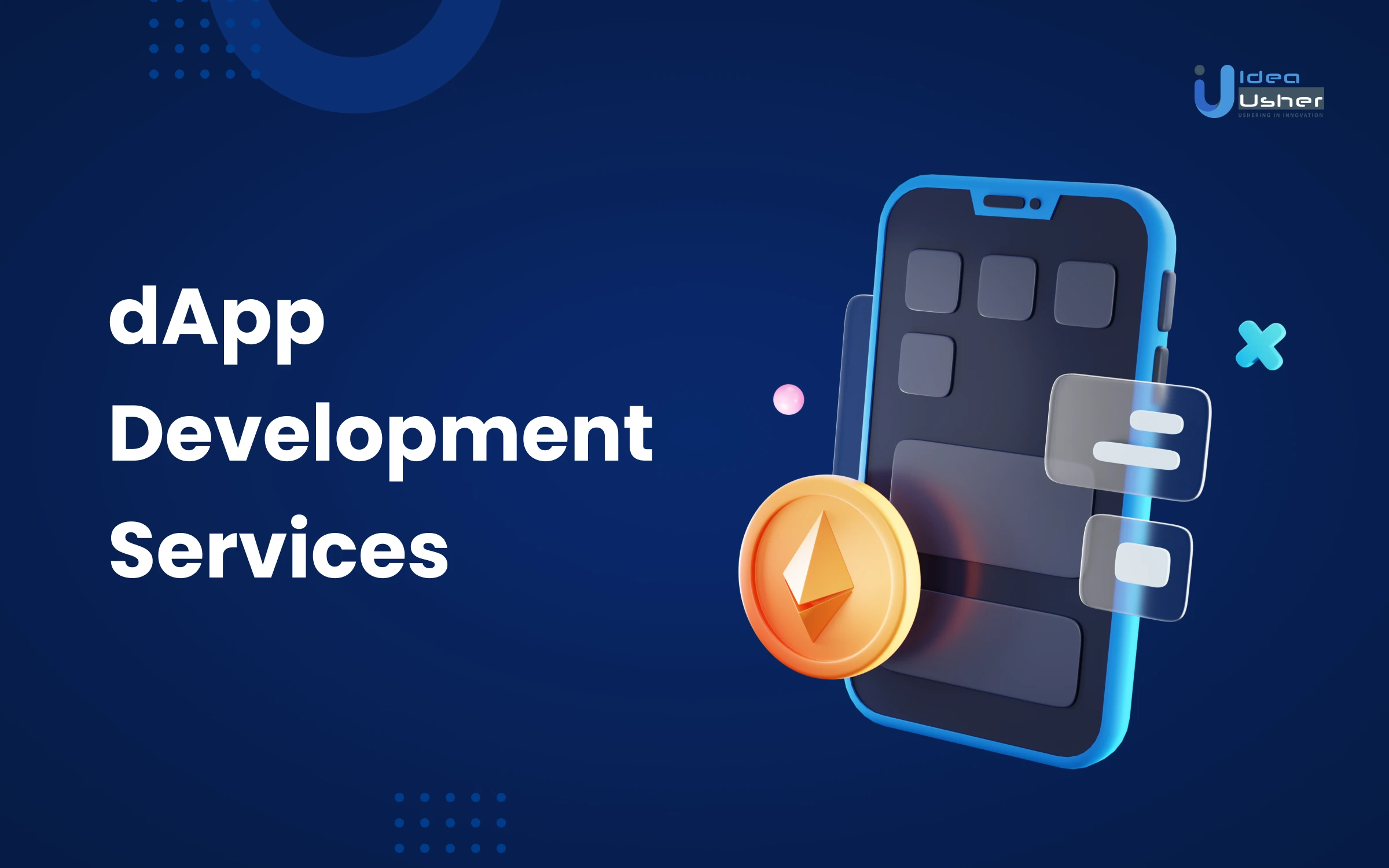
With a 56.1% CAGR and a forecasted revenue increase of $368.25 Billion by 2027, dApp (Decentralized Application) development is becoming increasingly popular as businesses look to benefit from the trustless, secure, and open-source nature of blockchain technology. With the right idea and development team, businesses can leverage the power of blockchain to create reliable and secure applications that can impact their operations.
In this guide, we’ll explore the basics of dapp development and explain the best dApp ideas to help your business. We’ll discuss the fundamentals of developing dApps, the technologies involved, and the different types of dApps available. We’ll also look at the potential benefits that dApps can bring to businesses and explore some of the most successful dApp projects to date.
What is a dApp?
A dApp (Decentralized App) is an application that runs on a distributed and decentralized network, typically a blockchain. dApps are designed to provide users with a secure, transparent, and reliable platform for interacting with digital assets, services, and products. Unlike traditional apps, dApps are decentralized, meaning users can access them without relying on a single third-party provider. This provides users with a greater level of control over their data, as well as more secure access to digital services. By leveraging the power of distributed ledger technology and cryptography, dApps offer users greater trust and security and a more immersive and engaging experience in the digital realm.
Key Market Insight
The DApps development market has experienced significant growth, reaching a valuation of $25.63 billion in 2022. Experts predict this upward trend will continue, with the market expected to reach $70.82 billion by 2030 at a compound annual growth rate (CAGR) of 56.1%. This expansion is driven by several factors, including the increasing demand for faster transaction processing and the inherent advantages of DApps, such as transparency, reliability, flexibility, and scalability.
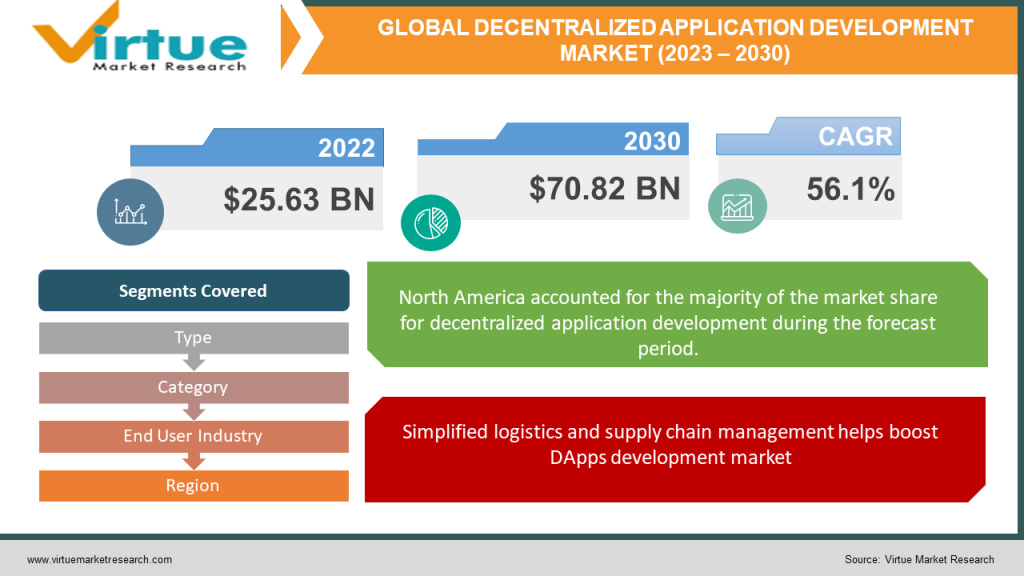
Benefits of dapp Development Services
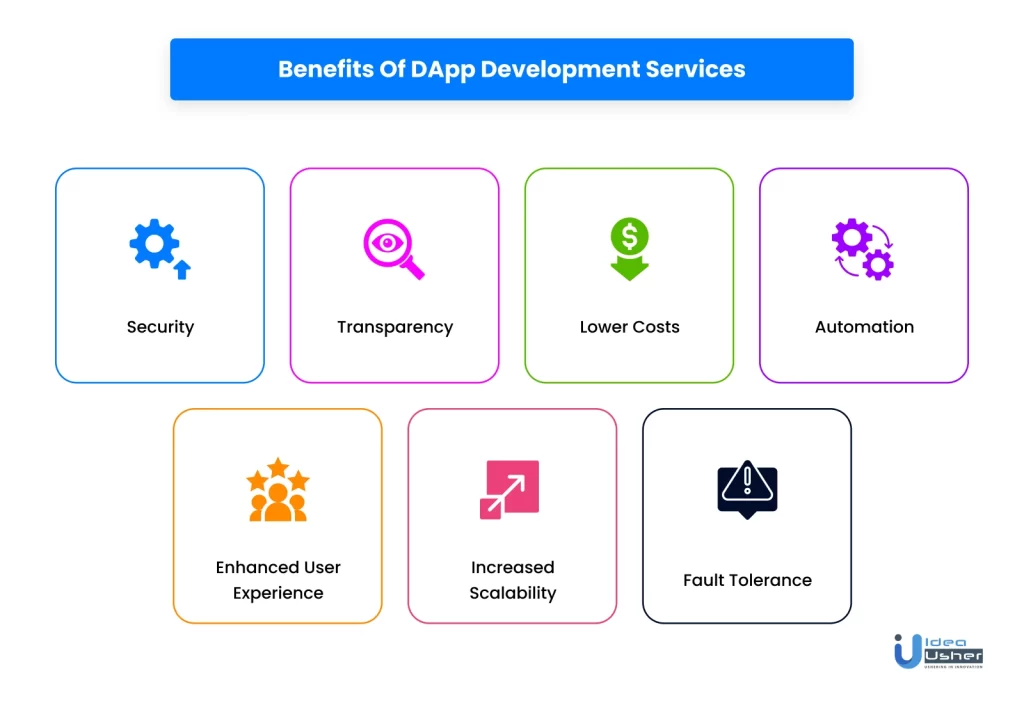
In addition to improved governance and dispersity, dApps offer a variety of benefits. They facilitate us with:
1. Security
One of the greatest benefits of dApps is their improved security. dApps are decentralized and distributed across a network of computers, meaning that the data and operations are stored in a secure, tamper-proof blockchain. This eliminates data manipulation and loss risks, making it a secure platform for businesses and individuals.
2. Transparency
dApps are immutable, meaning all data stored in the blockchain is transparent and verifiable. This provides businesses with a reliable way to track and monitor their assets, transactions, and activities, making dApps an excellent choice for companies that must adhere to strict regulations.
3. Lower Costs
dApps are built on distributed networks, so they have no server costs. This reduces the infrastructure costs of development and maintenance, making them more cost-effective than traditional applications.
4. Automation
dApps can automate specific processes, such as data entry and recording. This makes them ideal for businesses that carry out repetitive tasks, as they can reduce the time and effort required to complete them.
5. Enhanced User Experience
dApps are designed to be user-friendly to provide users with an intuitive experience when interacting with the platform. This makes them ideal for businesses looking to provide their customers with a streamlined and efficient way to interact with their products and services.
6. Increased Scalability
dApps, built on distributed networks that can be infinitely scaled, are an excellent option for businesses looking to scale up quickly. This allows companies to quickly add new nodes and resources to their networks, allowing them to accommodate an ever-growing user base.
7. Fault Tolerance
By leveraging the distributed ledger technology inherent in dApps, businesses can build highly reliable systems that can withstand failures, data loss, and other disruptions. This fault tolerance is due to the decentralized nature of dApps, which allows the system to continue running even if specific nodes or components fail.
Best dApp Ideas to Help Your Business
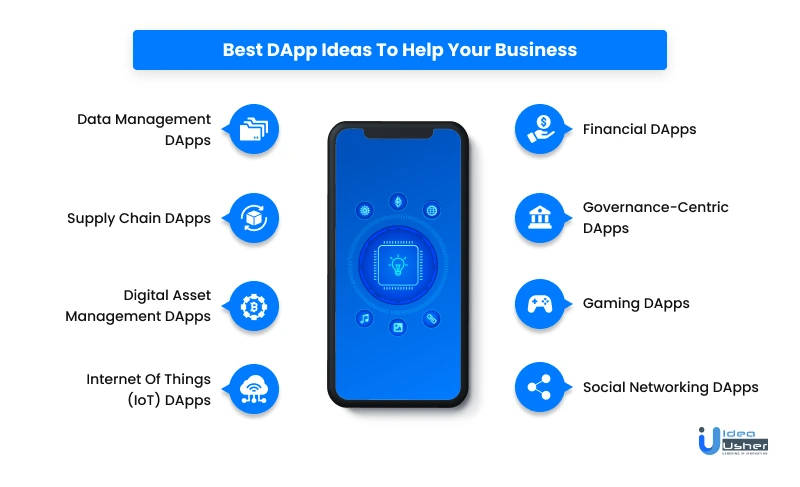
The most prevalent dapp use cases include creating unique blockchain-based loyalty programs, metaverse experiences, and payment solutions to improve user experience and business development. However, given the capabilities of blockchain technology, there are several dApp creation options. Listed below are a few dApp concepts and examples:
1. Financial dapps
Financial dapps, or DeFi apps, include developing decentralized financial solutions like cryptocurrency exchanges, asset tracking, lending platforms, and likewise. Coinbase, Binance, OpenLaw, and Celcius Network are prime examples of the different DeFi applications.
2. Governance-centric dApps
These dApps are usually found as voting system apps, decision-making tools, and community governance facilitators. Popular examples include Aragon, Democracy Earth, Boardroom, etc.
3. Gaming dApps
These types of dApp involve creating decentralized PvP gaming applications, online casinos, sports betting apps, and more. Popular examples of gaming and betting dApps include Axie Infinity, CryptoSlots, FortuneJack, etc.
4. Social Networking dapps
The prime focus of such social networking applications’ is to facilitate messaging and content-sharing through decentralized peer-to-peer networks. Examples of social networking dapps include Steemit, a blogging platform that rewards users for creating content, and Peepeth, a platform for sharing micro-content.
5. Data Management dApps
Such dApps involve decentralized data management, identity management, document storage, etc. These applications allow users to securely store their data while also allowing them to share it with others without having to worry about privacy breaches.
Such dApps are usually associated with NFT marketplaces and ecosystems. Examples are the apps by OpenSea, Rarible, and likewise NFT behemoths. These facilitate convenient minting, listing, and secured transactions of digital data assets as NFTs.
6. Supply Chain dApps
Such dApp development focuses on creating decentralized solutions related to supply chain logistics tracking, inventory management, etc. These applications can help streamline the supply chain by providing distributed, secure, automated data capture, storage, and analysis.
Such applications can drastically reduce the paperwork and manual processes associated with supply chain management, allowing enterprises to make data-driven decisions with absolute confidence. CargoX, OriginTrail, and SkuChain are the finest examples of supply chain dApps.
7. Digital Asset Management dapps
Such dApps enable users to store, manage securely, and track digital assets. They also facilitate tracking, storing, securing, and managing digital contracts and certificates, ensuring immutability, traceability, and enhanced transparency of digital assets. Examples: CryptoDepot, Blockfolio, and AssetMint.
8. Internet of Things (IoT) dapps
IoT dApps are decentralized applications built on blockchain technology to manage and store data from IoT devices. These dApps can use decentralized networks that store and manage data from IoT devices and interact with other blockchain-based applications. An exemplar use-case for such would be a smart home automation dApp that collects data from multiple IoT devices, such as temperature sensors, energy meters, and security systems. Examples of some popular IoT dApps are Helium IoT Miner, Meshify, ThingsBoard, and DevicePilot.
The dapp Development Process
At Idea Usher, we use a comprehensive approach when creating dApps, utilizing a variety of programming languages, frameworks, and blockchain protocols. This allows us to craft tailored solutions specific to the needs of our clients, helping ensure that the ultimate product is ideally suited to its intended purpose.
Our expertise covers a wide variety of programming languages (JavaScript, TypeScript, Go, and Solidity), frameworks (Angular, React, React-Native, and Ionic.), and blockchain protocols (Ethereum, EOS, Hyperledger, Celo, and Polkadot.)
Let’s now have a look at the development process:
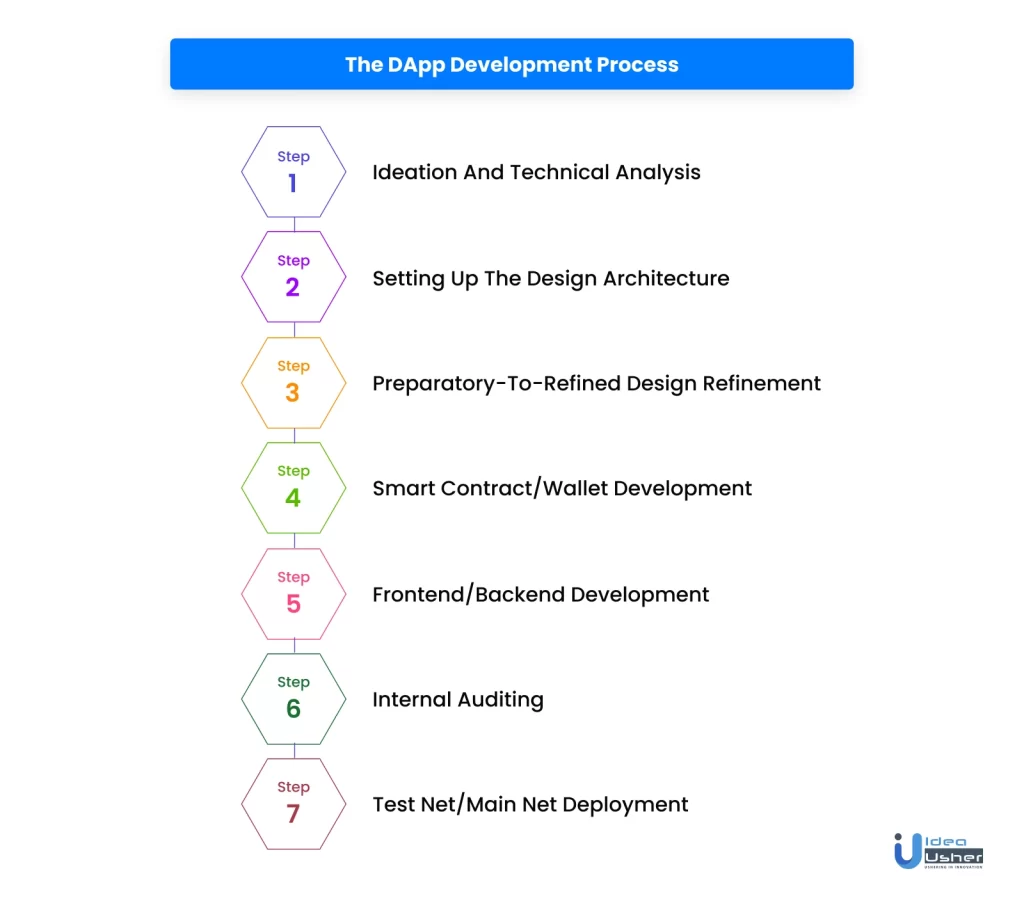
Step 1: Ideation and technical analysis
Analyzing the dApp’s business use case is necessary as the first stage. This involves thoroughly grasping the app’s functionality and how it will address the issues faced by the business. Once the root cause of a problem at a business level is identified, a technical analysis is carried out to determine how blockchain technology can resolve it and which platform should be used for the purpose.
While the platform can be any blockchain of your choice, you still need to have a firm concept of your app’s functionality. This can range from the dApp simply being an aggregator to your existing website, facilitating decentralized payments and transactions, to providing users with a collaborative and immersive experience.
If a plan for developing a dApp is already in place, we further evaluate it to see if any adjustments or modifications should be made.
Step 2: Setting up the design architecture
Once the use case has been defined, the next thing we do is create an initial design of the dApp architecture. The aim of this design is to produce a proof of concept (POC) that shows how the various components of the dApp will work together. The design architecture outlines a plan for how smart contracts, storage, and blockchain will be integrated into the front-end, user interface, and backend layers – allowing for seamless interactions between the design layers.
A typical architecture for dApp development is the client-server model.
This model involves a client (typically a web or mobile application) communicating with a server (usually a blockchain or distributed ledger) to access data. For example, a dApp could be built on the Ethereum blockchain, where the client communicates with the Ethereum blockchain to access data, such as smart contracts, transactions, and account balances. The client would also communicate with a server to access additional data, such as user accounts, user profiles, and other related data. This architecture would provide a secure system to store data and execute smart contracts on the blockchain.
Step 3: Preparatory-to-refined design refinement
Both preparatory and advanced design prototypes are produced following the selection of the dApp’s architecture. Visual design, information, and interactivity are all components of design prototypes.
The app’s look and functionality are developed in the first preparatory design. After attending to the features with more detail – a more responsive, clickable, and advanced design prototype is produced.
Step 4: Smart Contract/Wallet Development
The next step is to develop smart contracts that link the dApp to the blockchain and execute the app’s business logic and functions. Wallets are also created during this step to allow token trading or transactions through the application.
An example would be smart contract development and backend wallet integration for a dApp that allows users to buy and sell digital assets such as cryptocurrency. Integrating cold wallet extensions (Metamask, Coinbase, etc.) would facilitate the secure storing of digital assets. At the same time, the smart contract (tokenization, derivative, or crowdfunding contract) would aid in managing the transactability of the assets. The same smart contract would function as a payment gateway to enable users to make payments using fiat or cryptocurrency.
Step 5: Frontend/Backend Development
Frontend development involves designing the user interface, developing the application logic, and integrating any necessary APIs per functionality requirements. For dApps also, JavaScript triumphs as the most popular language for front-end development.
Backend development involves setting up a blockchain network, coded using blockchain-specific languages such as Solidity or Vyper, and further integrating necessary payment, functionality, and customization-based APIs. The security protocol of the dApp as per the client is also implemented as part of backend development.
Step 6: Internal Auditing
We review the preceding development phases through an internal audit to determine if all the stipulations and designs for the dApp are satisfied. Manual/automated testing is also done to evaluate how the particular parts of the dApp function together.
Step 7: Test net/Main net deployment
The test net deployment enables our developers and clients to examine the dApp for free and determine whether it works as expected. The dApp is tested, and any possible issues identified are rectified. Once tested and approved, the dApp is made accessible to the users on the main net and is ready to use.
Factors Affecting dapp Development Costs
Costs are usually dynamic attributes that depend upon numerous extrinsic factors. As for dApps, the below factors are the ultimate determiners:
1. Type of Industry
The industry where the DApp will be applied significantly impacts the development costs. Some industries have strict compliance requirements which need to be adhered to. Some may also have massive userbases and communities that would interact with the dApp simultaneously.
2. Development platform
The platform for development also plays a significant role in defining the costs. Ethereum, EOS, and NEO are some of the most popular platforms, and the cost of development varies depending on the medium chosen.
3. Developmental scope and complexity
Project scope and complexity also play their parts in defining the rates. More complex dApps require more resources and, hence, are more expensive to develop.
4. Project Time-frame
Last but not least, the cost-determining factor is the project timeframe. If the project is rushed, it usually becomes more expensive.
Tips to Develop a Successful dApp
Whether you are an individual or a company, having your bases set rightfully in place is always a plus before you start employing the technology. To develop a dApp that is utility-based and successful, you must make sure that you:
1. Understand the Technology
A successful dApp requires a thorough understanding of the underlying blockchain technology, smart contracts, security protocols, and distributed ledger systems. You must also have a clear concept of cryptography and consensus mechanisms. This knowledge will help you oversee the development of a robust and secure application that meets the needs of your business, followers, and users.
2. Analyze the Target Audience
The success of a dApp also depends on the user base or audience. For either an individual or a company, you must conduct thorough market research to identify your target audience and understand their needs. You need to design marketing initiatives to reach your target audience efficiently. Analytics may be used to assess the efficacy of campaigns and change their methods as necessary. Ultimately, you should have a firm idea of the end user using your dApp.
3. Have a Devoted & Enthusiastic Community
The success of a dApp depends on the strength of its user community. Engage with users to foster a sense of community and build trust. Consider creating forums, social media groups, and other platforms for users to engage and interact.
Why Choose Idea Usher
Finding the right development partner is equally essential for successfully creating a dApp. Idea Usher would be the perfect choice if you are looking to partner with a firm with a proven record and reputation in developing dApp solutions based on blockchain technology. Our development methodology ensures that we can abstract the complexities of the blockchain and deliver a unified user experience for you and your business. Our developers are well-versed in CI/CD dApp cloud installations. This comprises on-premise decentralized infrastructures (IPFS) and cloud platforms such as AWS and GCP. Contact us and get a customized dApp for your business today.
Conclusion
The rise of decentralized applications (dApps) is creating exciting opportunities for businesses to leverage the power of blockchain technology. By building dApps, businesses can create secure, transparent, and trustless applications that can revolutionize their operations and customer interactions. This guide provided a comprehensive overview of dApp development, explaining the benefits, processes, and factors to consider when building a successful dApp. It also highlighted the importance of finding the right development partner to navigate the complexities of blockchain technology and deliver a seamless user experience. With careful planning and execution, businesses can harness the potential of dApps to gain a competitive edge in the evolving digital
Get in touch with us now!
Contact Idea Usher at [email protected]
Or reach out at: (+1)732 962 4560, (+91)859 140 7140
FAQs
Q. What is dapp development?
A. It is the process of building decentralized applications (dApps) on a blockchain platform. These are applications run by a network of computers instead of a single server, making them more secure and resilient to censorship or manipulation. They can also run autonomously, meaning they don’t require any human intervention. They are open-source and typically use cryptographic tokens to incentivize participation within their networks.
Q. Can you make money developing a DApp?
A. Yes, dApps can benefit businesses as they offer many advantages. dApps allow business owners to create their own applications on a decentralized platform, giving them access to a wide range of users and services. They also benefit from lower costs, faster transaction times, and greater security. In addition, dApps can help businesses drive customer engagement, offer better customer service, and create new revenue streams.
Q. What are the steps for dApp development?
A. Fundamentally, the development of dapp begins with gathering requirements, designing the architecture, setting up the environment, and coding the front-end and back-end of the dApp. Once the development is complete, the dApp is tested, deployed, and monitored to ensure it works properly. Finally, dApp is marketed and promoted using various channels to reach potential users.
Q. How much time does it take to develop a dApp?
A. The time it takes to develop a dApp can vary greatly depending on the project’s complexity. Generally, the more complex the dApp, the longer it will take to develop. Additionally, various factors, such as the team’s experience and the size of the project, can also affect the timeline.
Q. How much does it cost to build a dApp?
A. The cost to build a dApp can vary widely depending on the project’s complexity and the development team’s experience. Costs can range from a few thousand dollars for a basic dApp to hundreds of thousands for an enterprise-level dApp.






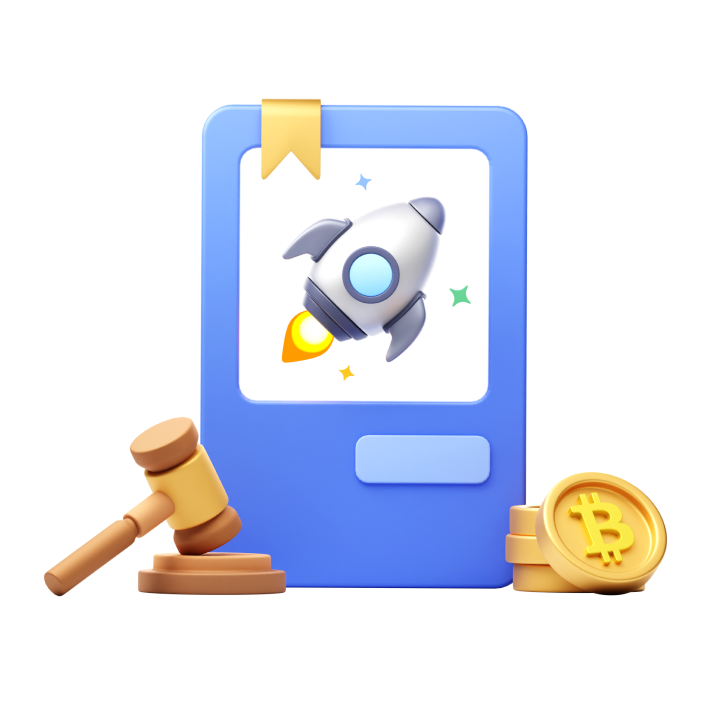


Sayan Chakraborty